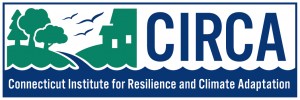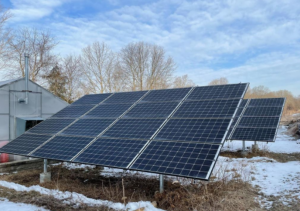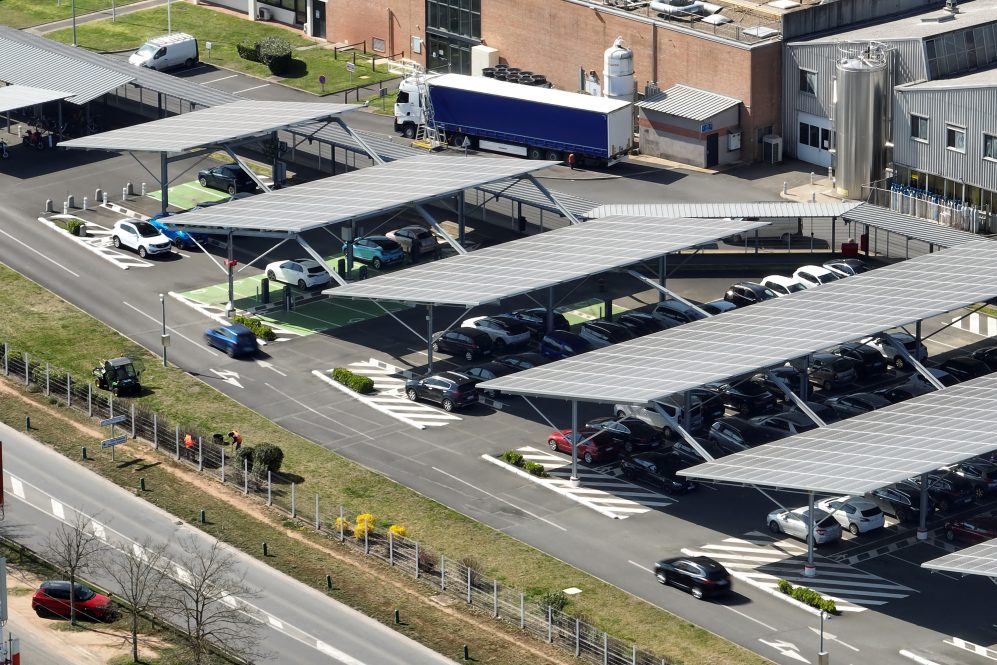When the Inflation Reduction Act (IRA) passed in August, Kirt Mayland, energy legal fellow at the Connecticut Institute for Resilience and Climate Adaptation (CIRCA) said it was a welcome surprise.
“After West Virginia versus EPA, the climate change advocacy world was in the dumps, and then all of a sudden the IRA passed, and we’re like, ‘Okay, we’re back,’ he says. “The IRA pumped a ton of unprecedented money into renewables.”
The IRA offers great promise for building resilience, Mayland says, with measures for municipalities to grow their clean energy capacity and grid resilience. However, with a text over 700 pages long – and with the fact that some funds are first come, first served – municipalities may not know where to start with the legislation. While developers are adept at seizing funds first, Mayland wants to help give municipalities an edge.

The renewable energy field is largely made for lawyers and accountants when it should be for contractors and electricians, says Mayland, and navigating the funding and incentive programs can be difficult.
Confused? Overwhelmed? Out of the loop? CIRCA is here to help
“I’ve been in the field for 15 years, which makes me a veteran in the renewable energy world,” says Mayland. “A lot of my projects involved grabbing state and federal incentives for building solar facilities on landfills and brownfields. That was my expertise as an environmental lawyer, and I loved working my way through the process.”
When the IRA passed, Mayland knew he could put this expertise to good use. He and the CIRCA team quickly started developing a new program, Energy Resilience for Connecticut Municipalities, which he says is a logical fit for CIRCA, whose mission is building Connecticut’s resilience against the effects of climate change.
“With severe weather, one of the first things to go down is power,” Mayland says. “A lot of that falls on the utility but people want a stable, reliable source of power, even during and after extreme storm events, so grid resilience right now is largely up to the utility.”
Municipalities can increase their grid resilience by tapping into various Connecticut programs that have been enacted along with the new incentives in the IRA. For instance, hospitals and emergency care centers could stay online in times of grid failure if they have renewable energy sources locally, perhaps as near as the rooftop (for solar) combined with on-site battery storage and fuel cells.
The CIRCA program will fill a void, says Mayland, since there currently is no resource to help towns pore over the state and federal laws to find the right incentives fit for their needs.
“For the state incentives, somebody needs to come in and help the town by explaining for instance where and how to site a solar or battery project from a demand, interconnection, and land use perspective while maximizing the economics.”
Finding and Accessing Incentives
Many prior incentives relied on tax credits, which meant that to take advantage of a tax credit, the applicant had to pay federal income taxes. However, municipalities and non-profits don’t file federal income tax returns, so those incentives were largely off-limits.
The IRA replaced some tax credits with direct payment options, allowing municipalities to own their solar or battery facilities rather than leasing to private developers.
“With the IRA, there will also be different funds that municipalities can dip into, eventually, once the guidance and the regulations come out and we want it to be in good shape to either help implement or to help municipalities in accessing the money,” he says.
I want to see this happening in the towns, and I want to see stuff getting built. I want towns to be competitive with the private developers that put stuff on farmland or forest land. — Kirt Mayland, CIRCA Energy Legal Fellow
The IRA also allows for a 30% tax credit, and potentially more if the project is sited, for instance, on brownfield locations or in certain low-income communities. For the first time, the tax credit will also apply to batteries that are not coupled with solar projects, as was the previous requirement.
Another hurdle that the IRA helps overcome is with projects connecting to the national electrical grid. The process of installing the equipment and line to connect to the grid, called interconnection, would often be too costly and could make a project untenable, because interconnection and the associated costs were not considered part of the project eligible for the tax credit. Under the IRA, these costs can now be reduced by up to 30%.
Even if batteries currently have a relatively short-term dispatch capacity of two to four hours, when coupled with solar to recharge during the day and with proper demand management at night, you could still operate the building when the power goes out, says Mayland. Further, having the infrastructure in place will make future upgrades with longer-duration batteries easier as technology improves.
“Batteries are going to get better but it’s important to have the wires, the pipes, the infrastructure in place, using federal and state money so that eventually municipalities could operate for a long time offline using all renewables,” he says.
Navigating the process
Right now, Mayland is hoping to get the word out about the program to help get towns thinking about possibilities. This includes a guidebook — sort of a CliffsNotes version — to the various state programs and IRA provisions to point out different resources, including the CIRCA program. Then, he plans to meet with towns, starting with towns most likely to experience storm outages and distressed municipalities.
Mayland wants as many communities as possible to implement clean energy projects with these tax credits and incentives. In Connecticut and at the federal level, programs are aimed to extend into environmental justice communities by offering extra incentives for low to moderate-income communities. But there are important questions to ask here, he says.
“From a policy perspective, there are two things one, what is the project, and what does the community get? Are they getting more taxes? What are you doing for the community? Are they or the right buildings getting more energy resilient? You put in a solar field there, but is that benefiting the community? How can we assure developers are not going to just pocket the extra money offered from the state and the federal government to build there? From a policy perspective, we want to look at that and offer suggestions.”

Getting there will take baby steps, but Connecticut is slated to add 1,000 megawatts of batteries in the next 10 years, and that’s a good start, says Mayland. Other measures include household battery storage, including electric vehicles, potentially being made available for power companies to pull electricity from at peak periods to address some demand issues.
Mayland says they are interested in other ways to alleviate grid stress, such as taking California’s lead, where they saw success with using social messaging to alert people to turn up thermostats to avoid blackouts. Messaging and communication can quickly reduce demand while also educating people about the value of conserving resources.
“Social messaging might be a role for municipalities to assist utilities, especially since people tend to respond to their town governance more than they do to the utility,” he says.
Mayland is excited to see towns start implementing clean energy projects.
“I want to see this happening in the towns, and I want to see stuff getting built,” he says. “I want towns to be competitive with the private developers that put stuff on farmland or forest land. I want less of that and more solar carports, more rooftop solar, more landfill sites being used for solar, and more batteries coupled with all that solar for local grid resilience. For the town planners and energy committees who want these clean energy projects to happen on municipal buildings and on unused municipal land, we can start to help them with that process.”
To help your municipality get started in looking for state or IRA funding and incentives, connect them with CIRCA by contacting Kirt Mayland at kirt.mayland@uconn.edu. See the CIRCA fact sheet detailing Energy Opportunities for Connecticut Municipalities in the Inflation Reduction Act



